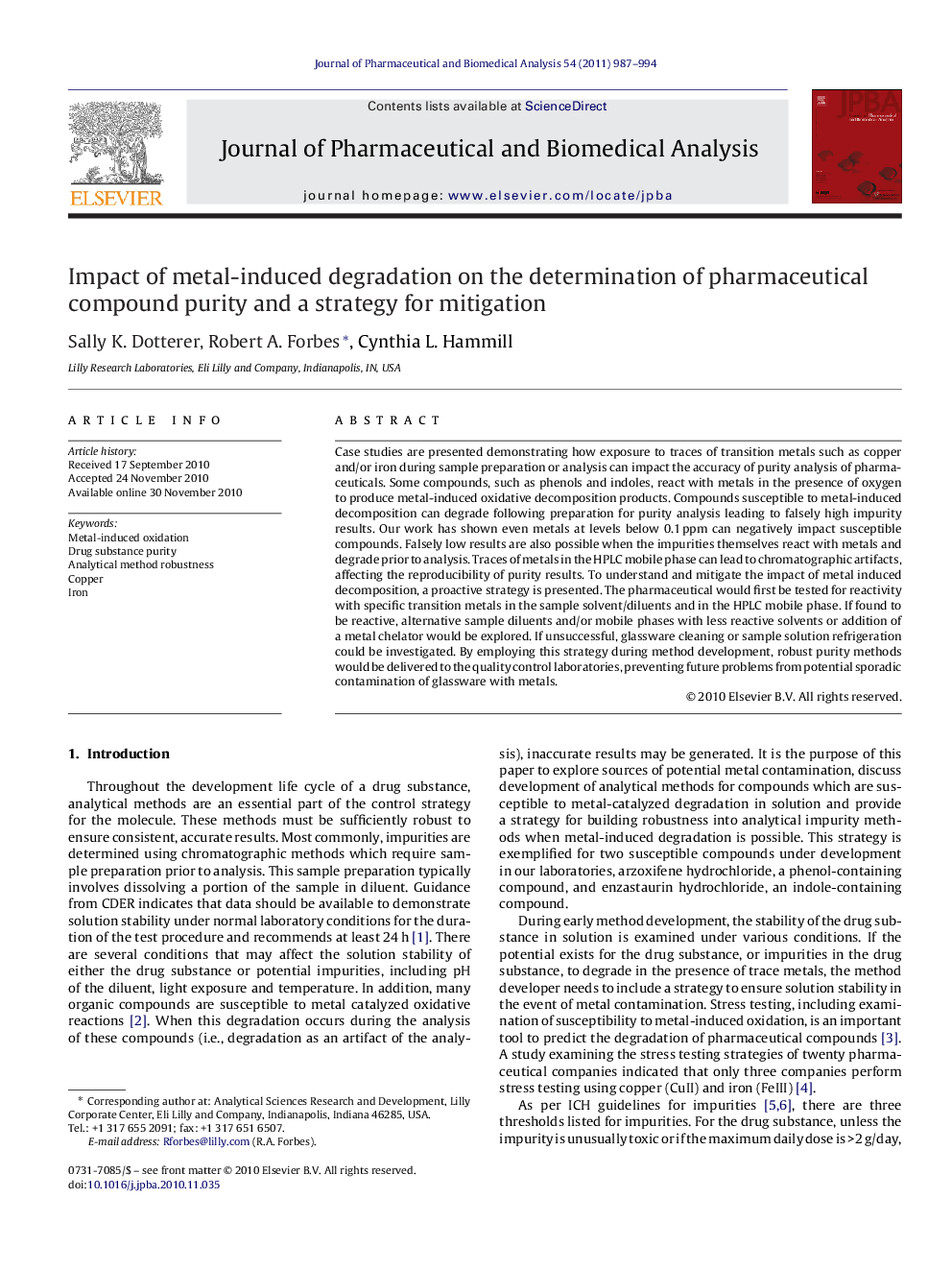| Article ID | Journal | Published Year | Pages | File Type |
|---|---|---|---|---|
| 1222597 | Journal of Pharmaceutical and Biomedical Analysis | 2011 | 8 Pages |
Case studies are presented demonstrating how exposure to traces of transition metals such as copper and/or iron during sample preparation or analysis can impact the accuracy of purity analysis of pharmaceuticals. Some compounds, such as phenols and indoles, react with metals in the presence of oxygen to produce metal-induced oxidative decomposition products. Compounds susceptible to metal-induced decomposition can degrade following preparation for purity analysis leading to falsely high impurity results. Our work has shown even metals at levels below 0.1 ppm can negatively impact susceptible compounds. Falsely low results are also possible when the impurities themselves react with metals and degrade prior to analysis. Traces of metals in the HPLC mobile phase can lead to chromatographic artifacts, affecting the reproducibility of purity results. To understand and mitigate the impact of metal induced decomposition, a proactive strategy is presented. The pharmaceutical would first be tested for reactivity with specific transition metals in the sample solvent/diluents and in the HPLC mobile phase. If found to be reactive, alternative sample diluents and/or mobile phases with less reactive solvents or addition of a metal chelator would be explored. If unsuccessful, glassware cleaning or sample solution refrigeration could be investigated. By employing this strategy during method development, robust purity methods would be delivered to the quality control laboratories, preventing future problems from potential sporadic contamination of glassware with metals.
